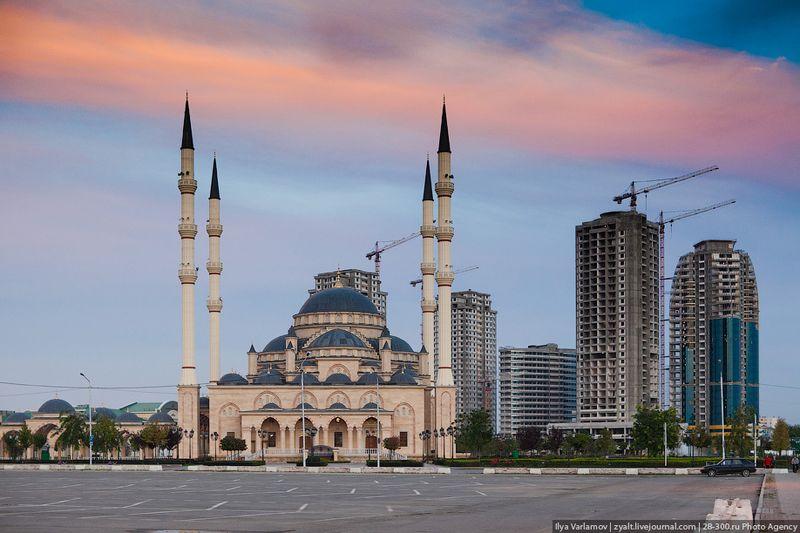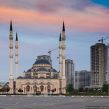
The Year in Chechnya: Reconstruction Marred by Lingering Insurgency and Inter-Chechen Conflict
Publication: Eurasia Daily Monitor Volume: 8 Issue: 15
By:

Summing up the situation unfolding in Chechnya over the past year, it is worth noting that diametrically opposite processes took place in that part of the North Caucasus. Anyone who had a chance to visit Chechnya in the last year seems to be excited about the changes that have been occurring in the landscape of the war-torn republic. At the site of yesterday’s ruins, Turkish companies have been erecting modern houses that now decorate the capital Grozny and nearby towns (www.youtube.com/watch?v=ZtiDGsJuR2Y&feature=player_embedded#!). Quite a few Muslim countries might envy Chechnya for the architecture and luxurious embellishments of the mosques that have already been built. There is virtually no village or settlement in the republic without natural gas or electricity, and the roads in Chechnya have become the best in Russia.
All of this leads many to be unable to see what is on the other side of the fence. No, unlike what was the case in 2005-2008, this construction is no longer for show; there is real work occurring, not a masquerade for foreign visitors to Chechnya. The Russian federal government is injecting large sums of subsidies into the troubled North Caucasus republic. The policy of “peace in exchange for money” is indeed in progress, though it is one-sided. That is, money must show the world the seeming pacification of Chechnya. However, life in Chechnya has other equally important features as well. One of them is what is done formally with Moscow’s consent involving the tandem of Prime Minister, Vladimir Putin, and his closest confidant, Vladislav Surkov, first deputy chief of staff of the Russian president. The second – the ugly side – is pro-Kremlin Chechen leader Ramzan Kadyrov’s ongoing struggle against the insurgency. And the third feature is Kadyrov’s fight against those who still refuse to become subordinate to him personally. These aspects more adequately reflect the harsh reality of life in Chechnya.
In 2010, the rebels intensified their activities in the North Caucasus and Kabardino-Balkaria was added to the list of territories where they were most active, in addition to such “traditional” hotspots as Dagestan, Chechnya and Ingushetia. According to the Kavkazsky Uzel website, the confrontation between the Russian security forces and law enforcement (called collectively siloviki in Russian), on the one hand, and the extremist underground of the North Caucasus, on the other, was most intense in Chechnya, Ingushetia and Dagestan. In 2010, no fewer than 127 people were killed and at least 123 injured in the armed conflict in Chechnya, including siloviki, militants and civilians. These statistical data are based exclusively on open sources (https://chechnya.kavkaz-uzel.ru/articles/179709/). Forty-four law enforcement officers were killed and 93 more injured. As for the suspected militants, 80 of them were liquidated and another 166 were captured. In the same period, 37 explosions were reported in Chechnya, including suicide bombings. There were 12 cases of terrorist acts committed by shahid martyrs (suicide bombers). Six people were kidnapped and only two of them returned home.
In 2010, the most brazen militant operations were an attack on the village of Tsentoroi in the Kurchaloi district of Chechnya at the end of August, where Kadyrov himself lives. This attack was followed by a suicide assault on the parliament building in Grozny on October 19. In both cases, the bombers were shahids for whom, in all probability, the armed attack itself was more important than its outcome. It means that their goal was to force the outside world to talk about Chechnya again, not as a Russian republic that is undergoing reconstruction, but as a place where the local pro-Moscow government is strongly opposed by the armed opposition headed by Doku Umarov – an ethnic Chechen who is based exclusively on the territory of Chechnya and is the embodiment of the North Caucasus resistance movement. And this objective was fully achieved by the militants.
Another problem that resurfaced in Chechnya in 2010, several years after it was thought that the issue had long been resolved, if not amicably then by the necessity to comply with and operate under the Russian law, is Ramzan Kadyrov’s ongoing dispute with the Zapad battalion. This unit was previously commanded by Kadyrov’s longtime opponent Magomed Kakiev. Kakiev, who commanded this special battalion of the Main Intelligence Directorate (GRU) of the Russian General Staff and received a Hero of Russia award, passed the post to his protégé Bislan Elimkhanov. This military unit is permanently stationed at Khankala, Russia’s major military base in Chechnya, which is located on the eastern outskirts of Grozny along the Grozny-Argun highway.
The Russian press described this conflict as a war of intelligence services, referring to the GRU unit and the local government’s regiment under Ramzan Kadyrov’s command (www.rosbalt.ru/2011/01/17/808953.html). The military units led by Bislan Elimkhanov are among those few in Chechnya that remain out of Kadyrov’s control, and this fact could play a bad joke on those who try to hide behind the Russian defense ministry. The defense ministry was unable to protect the life of Sulim Yamadaev, the commander of the Vostok special battalion, or that of his brother. Nor could it avert the removal of Magomed Kakiev or the attempted murder of Bislan Elimkhanov on September 17, 2008 (https://www.ej.ru/?a=note&id=8565).
The two rival groups clashed once again in central Grozny on November 14, 2010, when soldiers from the GRU military unit refused to obey the order to present their identification cards, and a quarrel turned into a fight and ended in the murder of Lieutenant Gelani Akhmadov, a traffic police officer. In response, speaking on local TV, Kadyrov demanded the disarming of all soldiers of the unit leaving the territory of the Khankala base and the surrender of the alleged killer –the Zapad serviceman, Aslan Magomadov, better known in Chechnya by the nickname “Tyson.” The story, therefore, was to be continued, and that was exactly what happened on January 9, 2011, when Elimkhanov was attacked shortly before entering the Khankala military base. He was wounded and his driver killed in the incident. Two of the attackers were killed and one man wounded –Lecha Bogatyrev, who together with his old comrades from the former FSB Special Forces unit called Gorets, organized the attack on Elimkhanov. Incidentally, Bogatyrev is the man wanted by the Austrian police on charges of murdering the Chechen refugee in Vienna, Umar Israilov, on January 19, 2009 (www.rosbalt.ru/2010/11/18/791437.html).
It appears that the relationship between the pro-Russian military units in Chechnya (represented by the GRU’s Elimkhanov, on one side, and the former Federal Security Service (FSB) officer Bogatyrev, on the other) is deteriorating. In this standoff, Kadyrov is supported by the FSB and opposed by the army. Given the fact that the goal has not been achieved yet, the confrontation will probably continue if there is no intervention by Kremlin officials. However, past experience shows that the diplomatic efforts of mediators are of little use in such conflicts.




